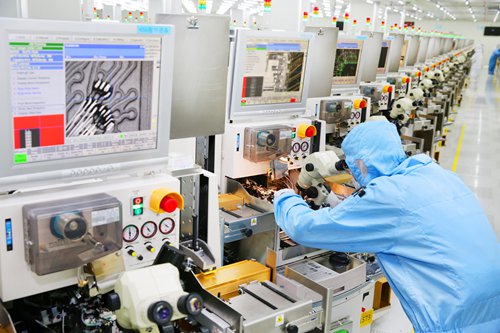Jura The idiot
General
now I read
Economic Watch: Record lunar new year spending echoes shifting economy
Xinhua| 2018-02-22 17:54:50
Economic Watch: Record lunar new year spending echoes shifting economy
Xinhua| 2018-02-22 17:54:50
Long queues of cars from all over China crawling along the main drags of south China's Hainan island were worsened by heavy fog that disrupted ferries, stranding over 100,000 passengers and more than 10,000 cars.
The plight of drivers and passengers in Hainan is the flip side of the booming tourism market there, as affluent Chinese seek fresh holiday experiences.
Some 386 million domestic trips were made from Feb. 15 to Feb. 21, up 12.1 percent from last year's holiday, while about 6.5 million overseas trips are expected to have been made to destinations ranging from Southeast Asia to Antarctica.
Double-digit growth in tourism revenue, means about 475 billion yuan (about 75 billion U.S. dollars) was made this holiday season, up 12.6 percent from last year.
China earned 5.4 trillion yuan from tourism in 2017, an increase of 15.1 percent. The country plans to draw 7 trillion yuan in tourism revenue by 2020.
The sector has played a major part in overall consumption during the holiday, which posted a record high of over 900 billion yuan. Shops and restaurants reported sales of 926 billion yuan during the past week, up 10.2 percent.
Ahead of the holiday, Wang Bingnan, vice minister of commerce, predicted that the key term for this year's Spring Festival holiday would be "consumption upgrade," with higher-quality products and services gaining popularity, and he was right.
While meals at family gatherings previously included all kinds of meat, many people are now more interested in organic food, green vegetables, and other healthy products.
Major green food producers in Jiangxi, Qinghai and Shandong provinces saw double-digit sales growth, while fresh food sales doubled or even tripled on major e-commerce platforms.
Consumption in culture and entertainment was also strong, with box office takings a record 5.6 billion yuan during the holiday.
Domestic consumption has become a force driving growth. Consumption contributed 58.8 percent to growth in 2017, nearly four percentage points higher than five years ago. Retail sales of consumer goods are expected to expand by about 10 percent to exceed 40 trillion yuan this year, according to the China Council for the Promotion of International Trade (CT).
Consumption growth will be powered by new products and services as more affluent people are willing to pay more for higher quality and unique experiences, the report showed.

